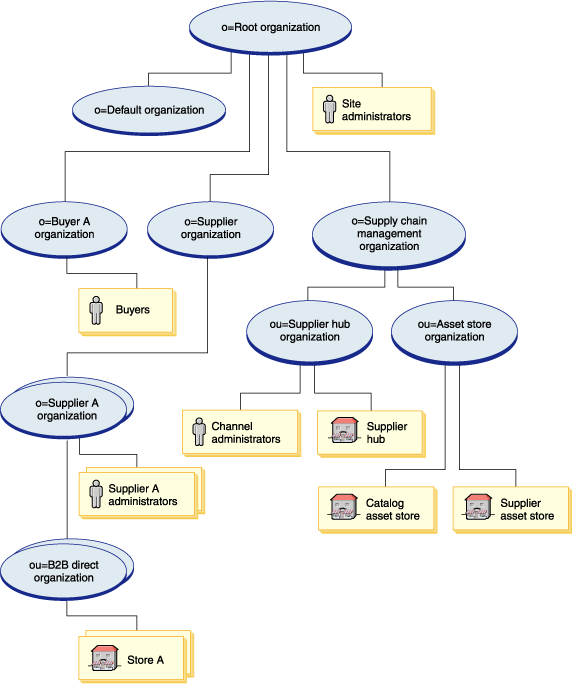Supply chain organization structure
The supply chain organization structure consists of the following organizations: Root organization, Default organization, Supply chain management organization, Supplier hub organization, Asset store organization, Supplier organization, Supplier organization A, B, C, and Buyer organization.

- Root organization
- All organizations in the business become descendents of the root organization. As well, the administrators who will maintain the online site, the Site Administrators, are added directly under the root.
- Default organization
- By default, nothing is placed under the default organization.
- Supply chain management organization
- The supply chain management organization is created to own all of the supply chain related organizations (with the exclusion of the organization that owns the suppliers). The supply chain management organization owns the following child organizational units:
- Supplier hub organization
- The supplier hub organization is created to own the supplier hub. The administrators who maintain the supplier hubs functions, as well as administering the supplier organization, are termed channel administrators and are owned directly by the supplier hub organization
- Asset store organization
- The asset store organization is created to own all assets that are used to create stores for suppliers.
- Supplier organization
- The supplier organization is created to own all of the suppliers in the supply chain. A child organization is created for each supplier.
- Supplier organization A, B, C
- A new supplier organization is created under the parent supplier organization, for each supplier store. The administrators who maintain the store's functions are termed supplier administrators and are owned directly by the corresponding supplier organization.
- Buyer organization
- Buyers are given their own organization under the root. All buyers are owned by the corresponding buyer organization.
Related concepts
Business models - - -